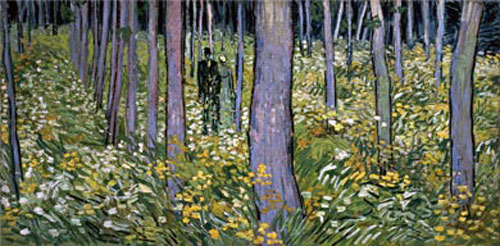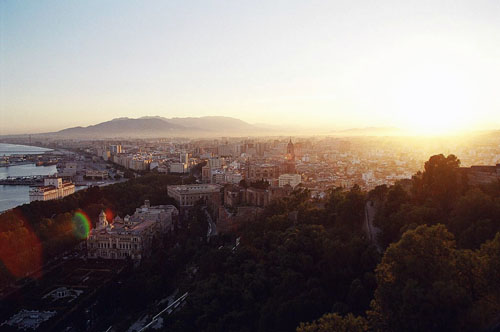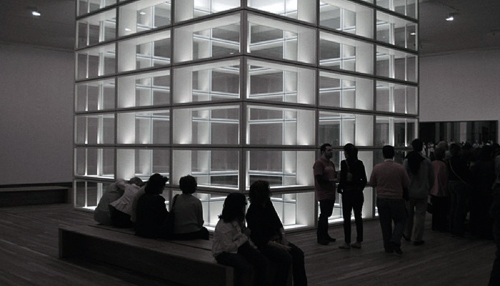We all know that most noble award of all, the Nobel Prize. Each year, scientists are awarded the Nobel Prize for Medicine, Physics, or Chemistry, as are authors and writers, for Literature.
The crown of all that is the Nobel Prize for Peace; never mind that Mr. Nobel was the inventor of dynamite, a product that has had its fair share in bringing down peace more often than enhancing it.
Not everyone knows that Spain has created the poor man’s Nobel Prize.
Well, that is not quite doing it justice. Spain has set up something similar, with perhaps a slightly more contemporary and more popular angle, and without the prize money that is attached to the Nobel Prize. And without any dynamite or other applications with sinister possibilities associated with it. It is called Premios Príncipe de Asturias, and is awarded annually to outstanding achievers from the world of theatre, literature, art, music, film, architecture, politics, sports and the world of science.
Stephen Hawking, Woody Allen, Daniel Baremboim, Günter Grass, Arthur Miller have all been awarded the ‘Premio Príncipe de Asturias’ in the past, as have Doris Lessing, J. K. Rowling, Susan Sontag, Yaser Arafat, Jane Goodall, Yehudi Menuhin, plus many others, as well as the Camino de Santiago, in case you should want to know.
Rigoberta Menchú Tum and Nelson Mandela are laureates of both, the Nobel Prize as well as the Premio Príncipe de Asturias.
The Prince of Asturias award was first bestowed in 1981 and now celebrates its 26th anniversary (quite a way from the 106 year old Nobel Prize). But Spanish Prince Felipe after whom the award giving Foundation is named, has the slight advantage of still being alive and kicking, something that Mr. Alfred Nobel, sadly for him, can no longer claim.
Quite why the Prize giving scheme was conceived is anyone’s guess. I suspect that the Premios Príncipe de Asturias have to be seen in the historical context.
After a dictatorship of 40 years, Spain has been a Parlimentary System with a Constitutional Monarchy only since 1978. It is a system similar to the one in Great Britain. The Monarch is the head of the State and as such, represents Spain internationally. Prince Felipe is the 3rd child of King Juan Carlos and Queen Sophía. He was born in 1968; he will be 40 years old next January. His full name is Felipe Juan Pablo Alfonso de Todos los Santos de Borbón y Grecia. His Royal title is Prince of Asturias. He is also Prince of Girona and Prince of Viana. He is the Spanish Crown Prince, i. e. the future King of Spain, if things don’t change any time soon.
With a bit of maths you can work out that the prince was a mere 13 years old when the Premios Príncipe de Asturias were set up. I believe that the Spanish Royal family was then looking for a niche in the international scene. Spain also wanted to give itself an image of being democratic, pro-Western, open, liberal, dignified and humanitarian, attributes that this country had forgone during the dark years of Franco. Plus the young Prince also had to be given a role on the world stage with some prestige attached.
26 years on, Spain is a respected member of the world community, both in Europe and in the world. The Premios Príncipe de Asturias were certainly not fundamentally instrumental in getting Spain to this position, but they have hardly done any harm on the way there.
The Premios Príncipe de Asturias command prestige and respect already. They have not quite yet achieved the flair that the Nobel Prize evokes, but wait another 78 years, before we can take stock. They are in a close second position now and that is not bad going for such a young scheme.
The 2007 prize winners have already been named:
Writer, Amos Oz has won the ‘Premio Príncipe de Asturia de las Letras 2007’. Michael Schumacher won the award for Sports. Arts, Bob Dylan. German born British Lord Dahrendorf has won the ‘Premio Príncipe de Asturias’ for Social Sciences. Al Gore has won the ‘Premio Príncipe de Asturias’ for International Cooperation. Peter Lawrence and Ginés Morata have been chosen for Scientific and Technical Research.
And just a week ago or two, the ‘Premio Príncipe de Asturias de la Concordia’, was announced. Yad Vashem, the Holocaust Museum in Jerusalem, Israel, has been awarded the coveted prize.

The Holocaust Museum in Jerusalem, an international institution in memory of the six million Jewish victims of the Holocaust, aims to transmit to future generations the need for preserving human rights and, essentially, the respect for life. It is the only one of its kind in the world to also honour people who risked their own lives to save Jewish victims of the Shoah. Yad Vashem has become an important centre of information, research and education of one the largest genocides in the history of Mankind.
I just wish Israel would not only take good care of the memory of Jewish victims of the Holocaust, but would also begin to preserve human rights and respect for life in their own territory and in the immediate neighborhood in the present day, i. e. in Gaza, the Lebanon and also in Jerusalem. Too many victims and too much death, destruction, misery and hardship are caused on a daily basis in the vicinity of Yad Vashem.
If not, perhaps our children will visit an Intifada Museum in Gaza, one day, which the Premio Príncipe de Asturia might also choose to award some Concordia award to, in years to come.













